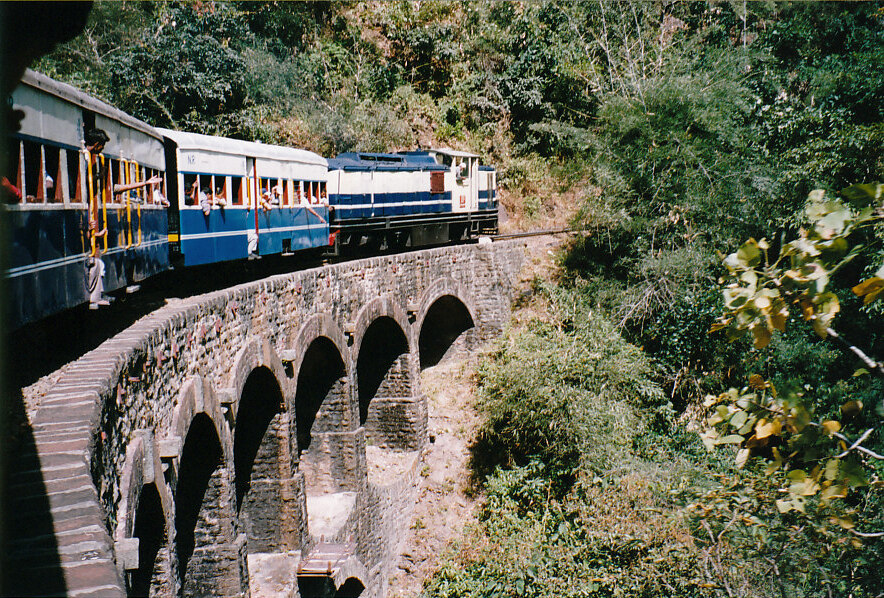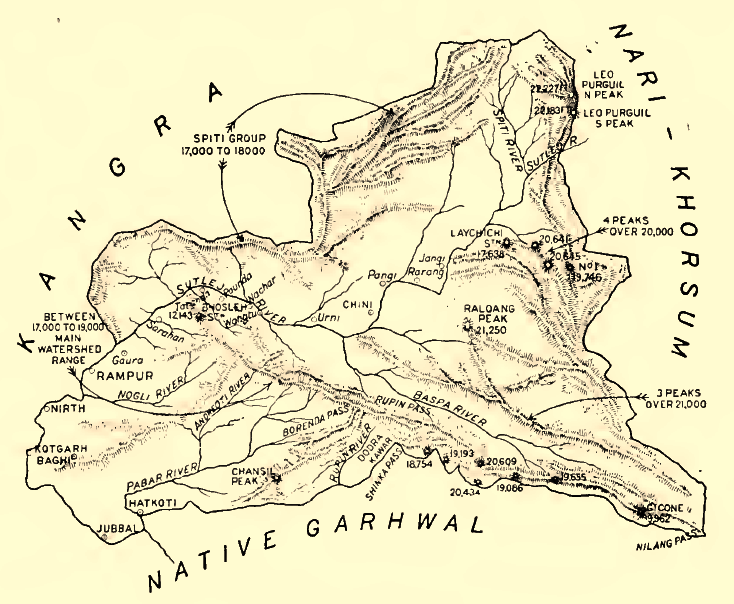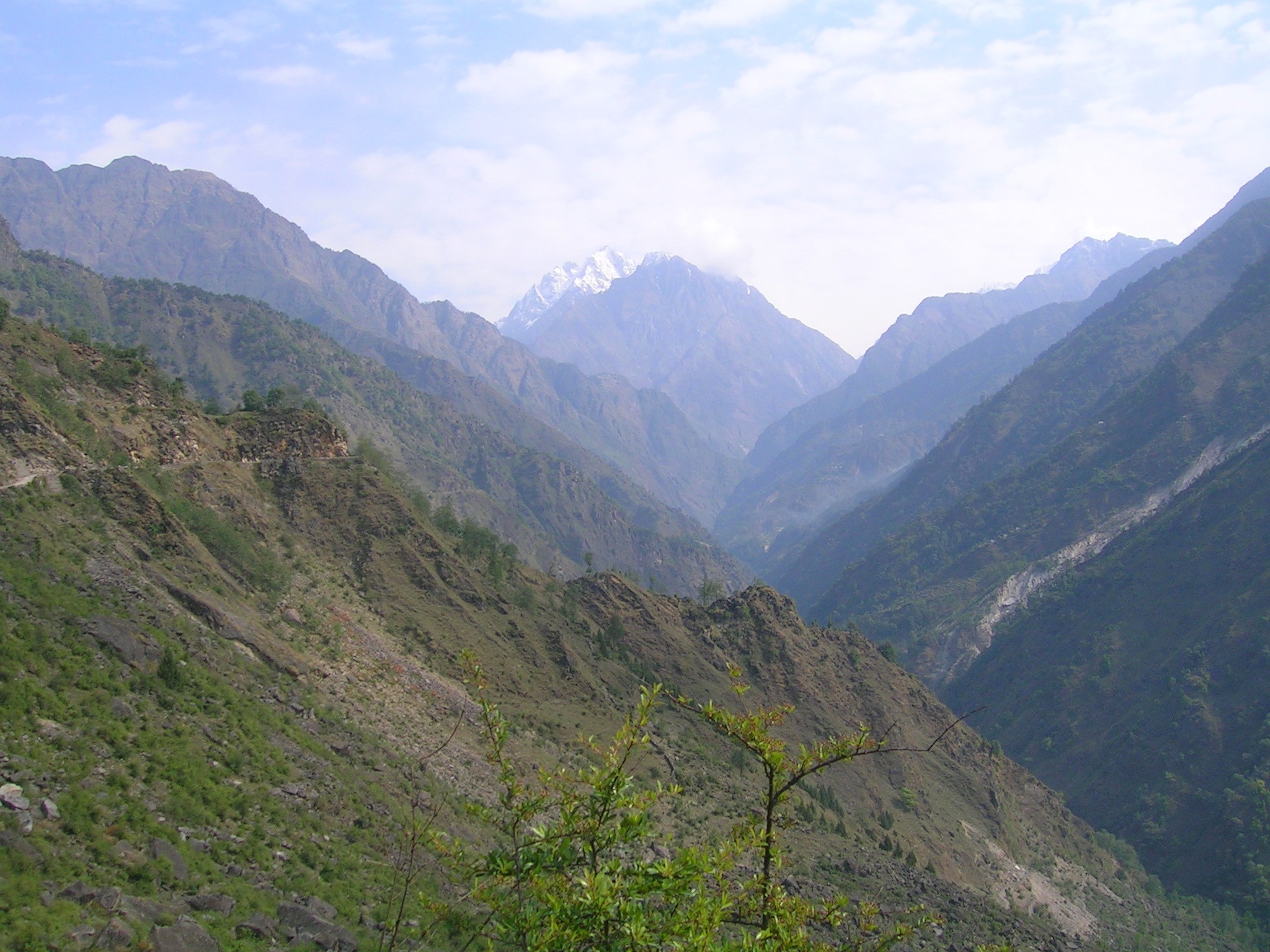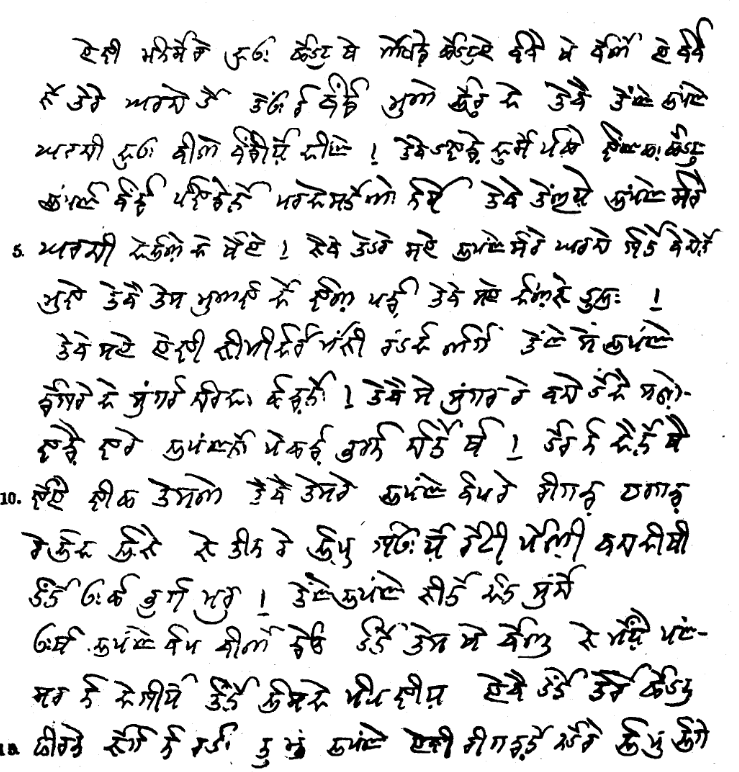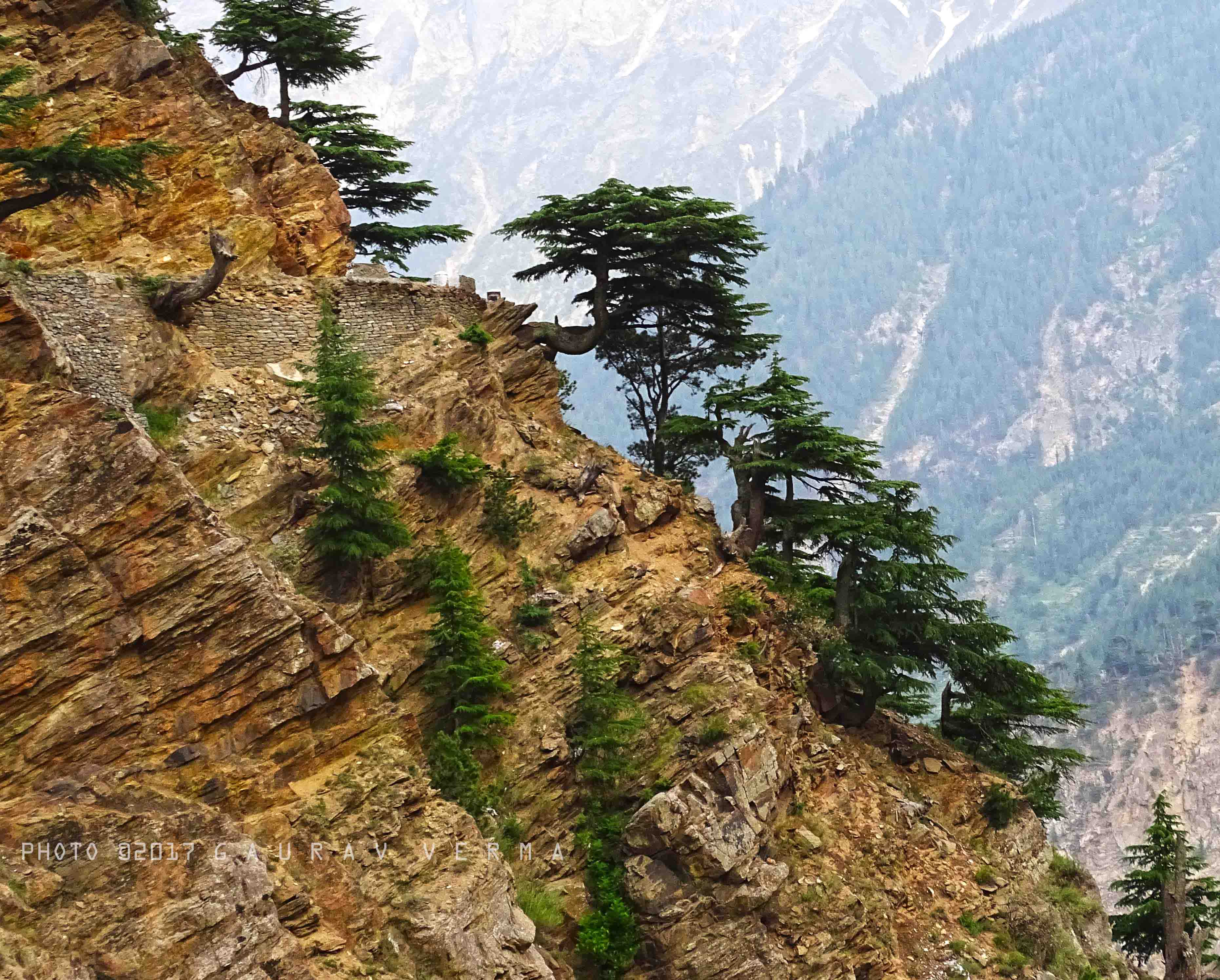|
Jubbal
Jubbal is a tehsil, town and a nagar panchayat in Shimla district in the Indian state of Himachal Pradesh which shares its boundary with the state of Uttrakhand towards south-east. Jubbal is recognised as a major apple producing area in Shimla district along with Kotgarh, Kumarsain, Kotkhai and Chopal. It is famous for its Hindu temples, picturesque mountains and its royal palace situated in the town. Geography Jubbal, located at has an average elevation of 2200 metres (7220 feet). A small hill town, it is famous for its apple orchards and the Jubbal Palace. Jubbal has a combination of vast landscapes, thick woods, and buildings. It is located at an elevation of 1901 meters. History The history of Jubbal State goes back to the 12th century. Among the 18 Thakur (Indian title), Thakuries located in the valleys of Sutlej, Tons River, Pabbar and Gori Ganga, Giri this Thakurai was of considerable importance. Rulers of Jubbal belong to the Rathore (Rajput clan), Rathore c ... [...More Info...] [...Related Items...] OR: [Wikipedia] [Google] [Baidu] |
Shimla District
Shimla district, known as Simla district until 1972, is one of the twelve districts of the state of Himachal Pradesh in northern India. Its headquarters is the state capital of Shimla. Neighbouring districts are Mandi and Kullu in the north, Kinnaur in the east, Uttarakhand in the southeast, Solan to the southwest and Sirmaur in the south. The elevation of the district ranges from to . As of 2011, it is the third most populated district of Himachal Pradesh (out of 12), after Kangra and Mandi. It is the most urbanized district of Himachal Pradesh. Administrative structure History Shimla district was obtained by the British in 1815. Access By road Shimla is connected by road to all the major towns. Distance between the major towns and Shimla: * Kalka - 80 km * Patiala - 172 km * Chandigarh - 119 km * Ambala - 166 km * Delhi - 380 km * Agra - 568 km * Amritsar - 342 km * Jammu (via Pathankot) - 482 km * Srinagar - 7 ... [...More Info...] [...Related Items...] OR: [Wikipedia] [Google] [Baidu] |
Thakur Ram Lal
Thakur Ram Lal (7 July 1929 – 6 July 2002) was an Indian politician and a leader of the Indian National Congress from Himachal Pradesh. Political career Himachal Pradesh He was elected to the Himachal Pradesh Vidhan Sabha from the Jubbal-Kotkhai constituency in nine times from 1957 to 1982. He briefly served as the Chief Minister of Himachal Pradesh from 28 January 1977 to 30 April 1977. In the 1977 Himachal Pradesh Legislative Assembly election, he withstood the anti-Congress wave in elections conducted after The Emergency to win 60.2 percent of the votes in Jubbal-Kotkhai but saw the Congress reduced to 9 seats from the previous 53. He served as the leader of opposition in the legislative assembly from 29 June 1977 to 13 February 1980. Governor of Andhra Pradesh Ram Lal was appointed the Governor of Andhra Pradesh on 15 August 1983. While Chief Minister N. T. Rama Rao of the Telugu Desam Party was in the United States for surgery, he appointed finance minister N. ... [...More Info...] [...Related Items...] OR: [Wikipedia] [Google] [Baidu] |
Sirmoor State
Sirmur (also spelled as Sirmor, Sirmaur, Sirmour, or Sirmoor) was a princely state of India, located in the region that is now the Sirmaur district of Himachal Pradesh. The state was also known as Nahan, after its main city, Nahan. The state ranked predominant amongst the Punjab Hill States. It had an area of 4,039 km2 and a revenue of 300,000 rupees in 1891. History Origin According to Mian Goverdhan Singh in ''Wooden Temples of Himachal Pradesh'', the principality of Sirmaur was founded in the 7th to 8th century by Maharaja of Parmar Rajputs, and Rathore noble. Nahan State Nahan, the predecessor state of Sirmur, was founded by Soba Rawal in 1095 AD who assumed the name Raja Subans Prakash. Near the end of the 12th century in the year 1195, a flood of the Giri River destroyed the old capital of Sirmaur-Tal, which killed Raja Ugar Chand. A ruler of Jaisalmer, Raja Salivahana, thought this was an opportune time to attack the state as it was in a state of disarra ... [...More Info...] [...Related Items...] OR: [Wikipedia] [Google] [Baidu] |
Bushahr
Bushahr, also spelt as 'Bashahr' and 'Bussahir' or 'Bushair' was a Rajput princely state in India during the British Raj. It was located in the hilly western Himalaya promontory bordering Tibet. Bushahar was eighty four miles long, sixty two miles wide on eastern side, twelve miles wide on the western with an area of 3,820 square miles including that of Saire. The greater part of Bushahr was lying with in the drainage area of the Satluj, which runs from North-West to South-West. After Kashmir it was one of the oldest of the hill state in the Western Himalayas. According to legend Bushahar Dynasty was found by Pradyumana, the son of Lord Krishna. In order to marry the daughter of Banasur, the local chief of Shonitpur (Sarahan). Pradyumana is said to have come to that place after the death of Banasurin an encounter with him, he became the chief of Bushahar and Kinnaura region, since Bushahar had no male heir. Another legend describes Pradyumna the youngest of two brothers who had ... [...More Info...] [...Related Items...] OR: [Wikipedia] [Google] [Baidu] |
Hatkoti
Hatkoti is a village in Shimla district of Himachal Pradesh, India. It is a village located at the banks of Pabbar River and it is about 102 kilometres away from Shimla city. Hatkoti is also famous for Hateshwari temple and Sawra Kuddu Hydro Electric Project (111 MW). History Hatkoti temples date back to the period between the eighth to the ninth century CE, the Gurjara-Pratihara Period in Indian history. Parallels of these can also be found in the Balag Village in Theog Tehsil and the Hanol Region in Uttrakhand. The temples reflect the beautiful architecture of that era and were most likely built during the Pratihara Invasion of Kashmir, the route to which passed through the region. The architecture and design of Hatkoti Temple was originally in the classical Shikhara or tower style. The Shikhara style represents ancient structures that are conical or narrow at the top and have a wide base at the bottom. The walls of the temples are carved with ornate sculptures and speak vo ... [...More Info...] [...Related Items...] OR: [Wikipedia] [Google] [Baidu] |
States And Territories Of India
India is a federalism, federal union comprising 28 federated state, states and 8 union territory, union territories, for a total of 36 subnational entities. The states and union territories are further subdivided into 800 List of districts in India, districts and smaller administrative divisions of India, administrative divisions by the respective subnational government. The states of India are self-governing administrative divisions, each having a State governments of India, state government. The governing powers of the states are shared between the state government and the Government of India, union government. On the other hand, the union territories are directly governed by the union government. History 1876–1919 The British Raj was a very complex political entity consisting of various imperial divisions and states and territories of varying autonomy. At the time of its establishment in 1876, it was made up of 584 princely state, constituent states and the prov ... [...More Info...] [...Related Items...] OR: [Wikipedia] [Google] [Baidu] |
Gori Ganga
Gori Ganga ( Kumaoni: ''Gori Gād'') is a river in the Munsiari tehsil of the Pithoragarh District, part of the state of Uttarakhand in northern India. Its principal source is the Milam Glacier, just northeast of Nanda Devi along with the Glaciers of the Ralam River, and the Pyunshani and Uttari & Dakshini Balati Glaciers that lie on the western face of the Panchachuli Peaks. Etymology In the local language "gori" means white or fair. "Gad" and "ganga" both mean river. The water of this river froths and contains white clay/sand, so it looks white most of the time. Course The alpine trans-humant village of Milam is located one kilometer below the snout of the glacier. Here a left-bank stream called ''Gonka'' joins the Gori. The valley provides the approach route for access to peaks such as Nanda Devi East, Hardeol, Trishuli, Panchchuli and Nanda Kot. The Gori is also fed by glaciers and streams flowing from the eastern slopes of the east wall of the Nanda Devi Sanctuary, ... [...More Info...] [...Related Items...] OR: [Wikipedia] [Google] [Baidu] |
Mahasu Pahari Language
Mahasu Pahari (Takri: ) is a Western Pahari language spoken in Himachal Pradesh. It is also known as Mahasui or Mahasuvi. The speaking population is about 1,000,000 (2001). It is more commonly spoken in the Himachal Pradesh, Shimla (Simla) and Solan districts. It is to be known that Shimla and Solan were parts of the old Mahasu district. Himachal Pradesh State on 1 September 1972 reorganised the districts dissolving Mahasu district. The Solan district was carved out of Solan and Arki tehsils of the then Mahasu district and tehsils of Kandaghat and Nalagarh of the then Shimla District of Punjab. Area According to different locations, the language has developed several dialects. Lower Mahasu Pahari (Baghati, Baghliani, Kiunthali), Upper Mahasu Pahari ( Rampuri, Rohruri, Shimla Siraji, Sodochi). The Kiunthali variety appears to be understood by others, and their attitude toward it is favorable. Rampuri is also called Kochi; Rohruri is also called Soracholi; and Sodochi is also ... [...More Info...] [...Related Items...] OR: [Wikipedia] [Google] [Baidu] |
Shimla
Shimla, also known as Simla ( the official name until 1972), is the capital and the largest city of the northern Indian state of Himachal Pradesh. In 1864, Shimla was declared the summer capital of British India. After independence, the city became the capital of East Punjab and was later made the capital city of Himachal Pradesh. It is the principal commercial, cultural and educational centre of the state. Small hamlets were recorded before 1815 when British forces took control of the area. The climatic conditions attracted the British to establish the city in the dense forests of the Himalayas. As the summer capital, Shimla hosted many important political meetings including the Simla Deputation of 1906, the Simla Accord of 1914 and the Simla Conference of 1945. After independence, the state of Himachal Pradesh came into being in 1948 as a result of the integration of 28 princely states. Even after independence, the city remained an important political centre, hosting th ... [...More Info...] [...Related Items...] OR: [Wikipedia] [Google] [Baidu] |
Cedrus Deodara
''Cedrus deodara'', the deodar cedar, Himalayan cedar, or deodar, is a species of cedar native to the Himalayas. Description It is a large evergreen coniferous tree reaching tall, exceptionally with a trunk up to in diameter. It has a conic crown with level branches and drooping branchlets. The leaves are needle-like, mostly long, occasionally up to long, slender ( thick), borne singly on long shoots, and in dense clusters of 20–30 on short shoots; they vary from bright green to glaucous blue-green in colour. The female cones are barrel-shaped, long and broad, and disintegrate when mature (in 12 months) to release the winged seeds. The male cones are long, and shed their pollen in autumn. Chemistry The bark of ''Cedrus deodara'' contains large amounts of taxifolin. The wood contains cedeodarin, ampelopsin, cedrin, cedrinoside, and deodarin (3′,4′,5,6-tetrahydroxy-8-methyl dihydroflavonol). The main components of the needle essential oil include α-terp ... [...More Info...] [...Related Items...] OR: [Wikipedia] [Google] [Baidu] |
British Raj
The British Raj ( ; from Hindustani language, Hindustani , 'reign', 'rule' or 'government') was the colonial rule of the British The Crown, Crown on the Indian subcontinent, * * lasting from 1858 to 1947. * * It is also called Crown rule in India, * * * * or direct rule in India. * Quote: "Mill, who was himself employed by the British East India company from the age of seventeen until the British government assumed direct rule over India in 1858." * * The region under British control was commonly called India in contemporaneous usage and included areas directly administered by the United Kingdom of Great Britain and Ireland, United Kingdom, which were collectively called ''Presidencies and provinces of British India, British India'', and areas ruled by indigenous rulers, but under British British paramountcy, paramountcy, called the princely states. The region was sometimes called the Indian Empire, though not officially. As ''India'', it was a founding member of th ... [...More Info...] [...Related Items...] OR: [Wikipedia] [Google] [Baidu] |
Kingdom Of Nepal
The Kingdom of Nepal was a Hindu monarchy in South Asia, founded in 1768 through the unification of Nepal, expansion of the Gorkha Kingdom. The kingdom was also known as the Gorkha Empire and was sometimes called History of Asal Hindustan, Asal Hindustan. Founded by Prithvi Narayan Shah, a Gorkha monarch who claimed Thakuri ancestry from the Chaubisi Rajya, chaubisi principalities, the kingdom endured for 240 years under the formal rule of the Shah dynasty, whose authority fluctuated over time. It lasted until 2008, when the monarchy was abolished and the country became the Federal Democratic Republic of Nepal, Federal Democratic Republic. After the invasion of Tibet and plundering of Digarcha by Nepali forces under Bahadur Shah of Nepal, Prince Regent Bahadur Shah in 1792, the 8th Dalai Lama, Dalai Lama and Chinese Ambans reported to the Chinese administration for military support. The Chinese and Tibetan forces under Fuk'anggan attacked Nepal but went for negotiations afte ... [...More Info...] [...Related Items...] OR: [Wikipedia] [Google] [Baidu] |
